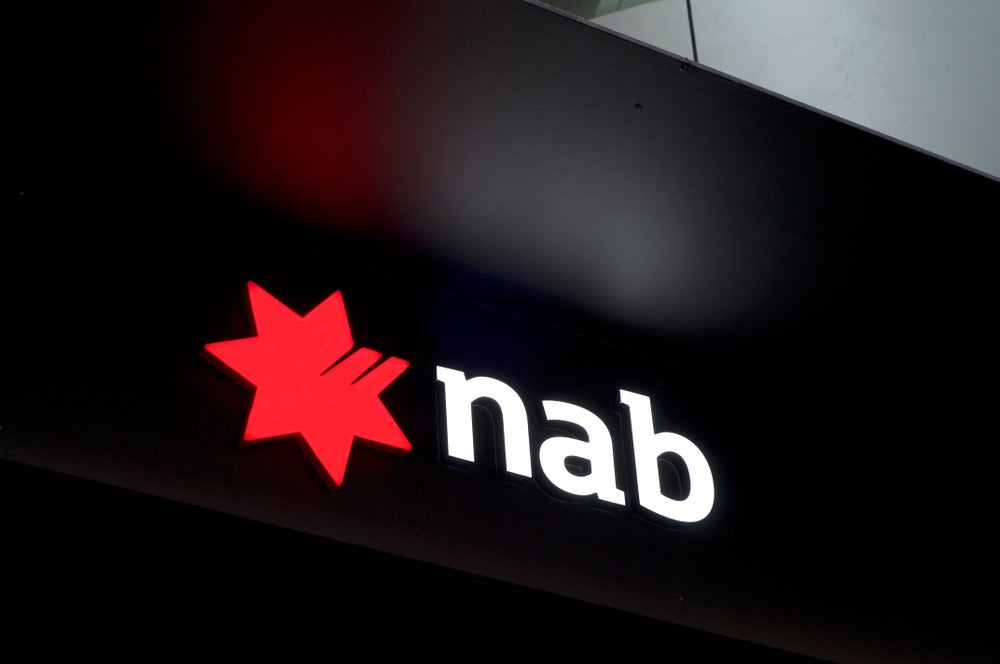Pantkowski, director of marketing and product development at
Poland’s Bank Pekao, about his bank’s 2008-2010 strategic plan.
Retail banking is expected to drive the bank’s growth, with product
innovation central to its target of strengthening its leadership of
the Polish market.
 UniCredit’s Polish
UniCredit’s Polish
subsidiary Bank Pekao – already the country’s largest bank in terms
of assets, consumer credits and deposits, with a branch network of
over 1,050 units and more than 5 million retail customers – has
unveiled an ambitious business plan for the next three years as it
looks to maintain its market-leading position.
Buoyed by satisfactory first-half results,
with net income of PLN1.97 billion ($805 million) up 7.9 percent
compared with a year ago thanks largely to an increase in net
interest income of 10.7 percent, the bank remains upbeat about its
prospects in the short and long term. Highlights included retail
loans up 25 percent year-on-year.
“2008 is a very important year for Bank
Pekao,” the bank’s director of marketing and product development,
Wojciech Pantkowski, told RBI. “Already, we are the
largest bank in Central and Eastern Europe in terms of assets.
Having completed the operational merger with an incorporated part
of Bank BPH, we are now able to concentrate fully on the
development of our business.”
Its 2007 acquisition of 285 branches of
Bank BPH – the rest is fully owned by GE Money and in the process
of being merged with GE’s local Polish franchise – enabled Pekao to
overtake public sector PKO as the country’s largest bank by
assets.
Pantkowski is also confident the Polish
economy will continue to provide a favourable environment for
growth – it has grown by more than 6 percent in each of the last
eight quarters – as increasingly wealthy customers swell the bank’s
mortgage, personal loans and credit cards earnings.
According to the bank’s most recent
estimates, the country will enjoy a relatively strong economic
performance with GDP growth forecast at 5.2 percent in 2008 and 4.7
percent in 2010, with inflation stabilising at a little over 3
percent in 2009.
How well do you really know your competitors?
Access the most comprehensive Company Profiles on the market, powered by GlobalData. Save hours of research. Gain competitive edge.

Thank you!
Your download email will arrive shortly
Not ready to buy yet? Download a free sample
We are confident about the unique quality of our Company Profiles. However, we want you to make the most beneficial decision for your business, so we offer a free sample that you can download by submitting the below form
By GlobalData“We believe in very strong growth mainly
in the volume of loans, up by 12.9 percent CAGR until 2010, and
mutual funds up by 11.2 percent in the same period, and have
targeted a growth in savings of 8.1 percent CAGR again to 2010,”
Pantkowski added.
Serious challenges to
overcome
While such figures will be the envy of
many of Pantkowski’s counterparts at leading banks in Western
Europe, there remain serious challenges to overcome. He stated that Poland is already a very
overcome. He stated that Poland is already a very
competitive market, driven mainly by price and demand for what he
refers to as “fashionable” products. Some examples of recent
in-vogue products are high interest rate accounts of up to 8
percent, structured deposits and Swiss Franc-denominated mortgage
loans.
“As new rivals enter the market, the
competition will only intensify,” he said. “This, combined with
market turmoil in neighbouring countries and the rest of the world,
will be the main challenges for the Polish financial sector over
the next few years.”
 UniCredit’s country
UniCredit’s country
plans for Poland follow its release in June of its group-wide
corporate plan for the period 2008-2010 in which the CEE region was
identified as the group’s principle engine for significant growth.
Pekao’s response to the fast-developing Polish market will centre
largely on product innovation, sharpening up its segmentation
strategy and a renewed focus on customer service.
And in the second half of 2008 and early
in 2009, Pekao plans to unveil a raft of new retail products.
Pantkowski stated: “We envisage that
retail, together with the small and medium-sized enterprise [SME]
sector, will be the segments that generate most of the growth in
the next three years. Pekao is ready to capture this growth
opportunity.”
In particular, Pekao will introduce new
dollar- and Euro-denominated credit cards, a new range of high
yield insurance deposits, release a range of structured deposits
and a new line-up of packaged current accounts.
On the back of a new IT platform, it will
also roll out a new card range with additional functionalities,
release a new online banking product, introduce an internet deposit
offering it is calling E-lok@ta, and
launch additional consumer finance products.
The bank is also planning to extend its
product range for SMEs, having refreshed its SME packages in June,
and will also introduce cross currency and cross border cash
pooling for the corporate sectors.
“We will be releasing a networked payment
system to facilitate settlements between clients within the bank,”
Pantkowski said. “We service around 50 percent of large companies
in Poland but we see the mass market and SMEs offering the largest
revenues pools, while the growing affluent segment will deliver the
highest risk adjusted returns.”
Six key objectives by
2010
As for the targets, the bank has six key
objectives to meet in the period to 2010:
• Return on equity (ROE) above 25 percent
(in the first half of 2008 it posted ROE of 24.1 percent);
• A cost-income ratio of no more than 40
percent (43.4 percent in H108);
• Cost of risk ratio of 0.5 percent (H1
2008 it posted 0.39 percent);
• Revenue CAGR in the period 2007-2010 of
around 10 percent;
• CAGR of risk-weighted assets of around 9
percent; and
• Value of EVA (Economic Value Added) in
year 2010 of around PLN4 billion and CAGR of EVA in years 2007-2010
of around 14 percent.
 In particular, the bank is
In particular, the bank is
aiming to achieve revenue growth in lending of 39 percent, savings
revenue growth of 31 percent and transaction revenue up 30 percent.
With the help of a planned new loyalty programme, Pekao is
targeting an increase of 15 percent in revenue from its cards
division. And new consumer and mortgage lending is expected to
account for PLN15 billion with new SME lending amounting to PLN5
billion.
“Pekao has currently around a 22 percent
market share through all segments and these targets are aimed at
strengthening our leadership position in the Polish market,” said
Pantkowski.
The only common measure by which Pekao
does not rank first in Poland is by branch network. It ranks second
after PKO, and Pantkowski stated that, following the integration of
BPH’s branches, the group is now “concentrating on optimisation” of
the branch locations. The merger with bits of the BPH business,
concluded in November 2007, was far from straightforward, with the
Polish government forcing Pekao to sell 200 BPH branches,
subsequently picked up by GE.
“It was a process of unprecedented
character,” said Pantkowski. “For the first and so far only time in
Poland, a bank [BPH] has been divided, with a majority of it being
later incorporated to another institution [GE].”
The parts of BPH acquired by Pekao
involved a large scale operational and IT integration, with the
retail branch network being integrated gradually, region by region
between January and June. “In the first half of 2008, 284 branches
and the data of over 1.5 million customers of BPH were successfully
and on-schedule migrated to the Pekao IT system,” Pantkowski
added.
The merger did initially cause some
teething problems for Pekao, resulting in adverse publicity in the
Polish press, with reports of in-branch queues and problems with
its telephone and internet banking operations.
“The bank undertook huge efforts in order
to address the difficulties encountered by clients quickly and
effectively,” he countered. “Being aware of the negative impact of
this situation on the bank’s image and clients’ satisfaction, the
bank has launched an extensive Customer Satisfaction Programme to
increase customer satisfaction.”
A well-developed distribution
network
The Pekao network now comprises 1,055
branches and around 150 franchise partner agencies. Pantkowski
argued: “We have a very well developed distribution capacity while
the Pekao24 service combines online, telephone and mobile
banking.”
The UniCredit influence is prominent
within Pekao, not least in terms of the group policy announced last
year to introduce a unified branding strategy across its various
subsidiaries (see RBI 579).
“UniCredit wants to be recognised as one
of Europe’s leading banks. That is why [it was] decided to align
all brands closely with the UniCredit Group master brand,” he said.
“This result goes a long way towards creating a single-minded,
strong brand presence throughout Europe, while maintaining the
local brand value where it is of high value.”
According to Pantkowski, there is
constructive sharing of ideas across the group.
“To give just a few examples – in terms of
cards business, we have learnt a lot from our Turkish colleagues,
as Turkey is one of the best markets for this kind of product. From
our home markets, like Italy and Austria, we draw experience in
customer service.”
Within the group, an internal platform
exists where all communication and product related departments can
find information on what other countries have created and what
works and what has failed.
“We had experience of the direct
adaptation of products and campaigns [mutual funds] in the
Hungarian market,” said Pantkowski. “While working on a new branch
model, we observed the experiences of our rebranded neighbours in
Slovakia and Ukraine.”
He concluded by saying that, as an added
incentive to share knowledge, UniCredit promotes an internal
competition and gives a ranking for the best product innovations
within the group.







